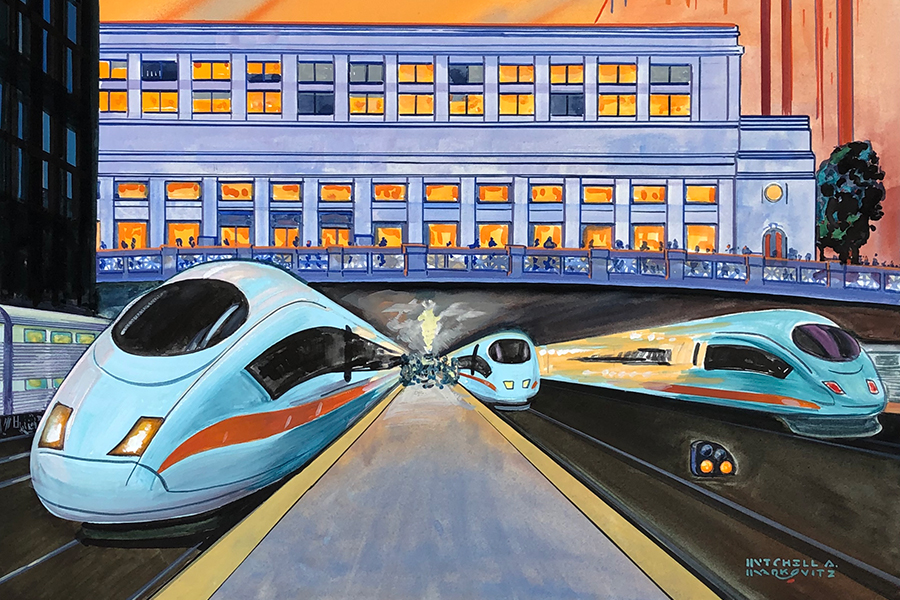It’s time for more trains from Chicago to New York City
A dynamic region
The Lake Shore Corridor – anchored by two global hubs of commerce and culture – is one of America’s most vibrant regions, economically and culturally.
Roughly 30 million people live within 25 miles of the route’s 20 rail stations.
The route connects 171 city pair markets, connecting smaller cities and towns to Chicago, New York and each other.
More frequent trains, scheduled to allow for a productive business trip to each major city, are needed to create stronger economic ties.

It’s time for daytime service to Cleveland which currently sees fewer Amtrak passengers than Williston, ND.
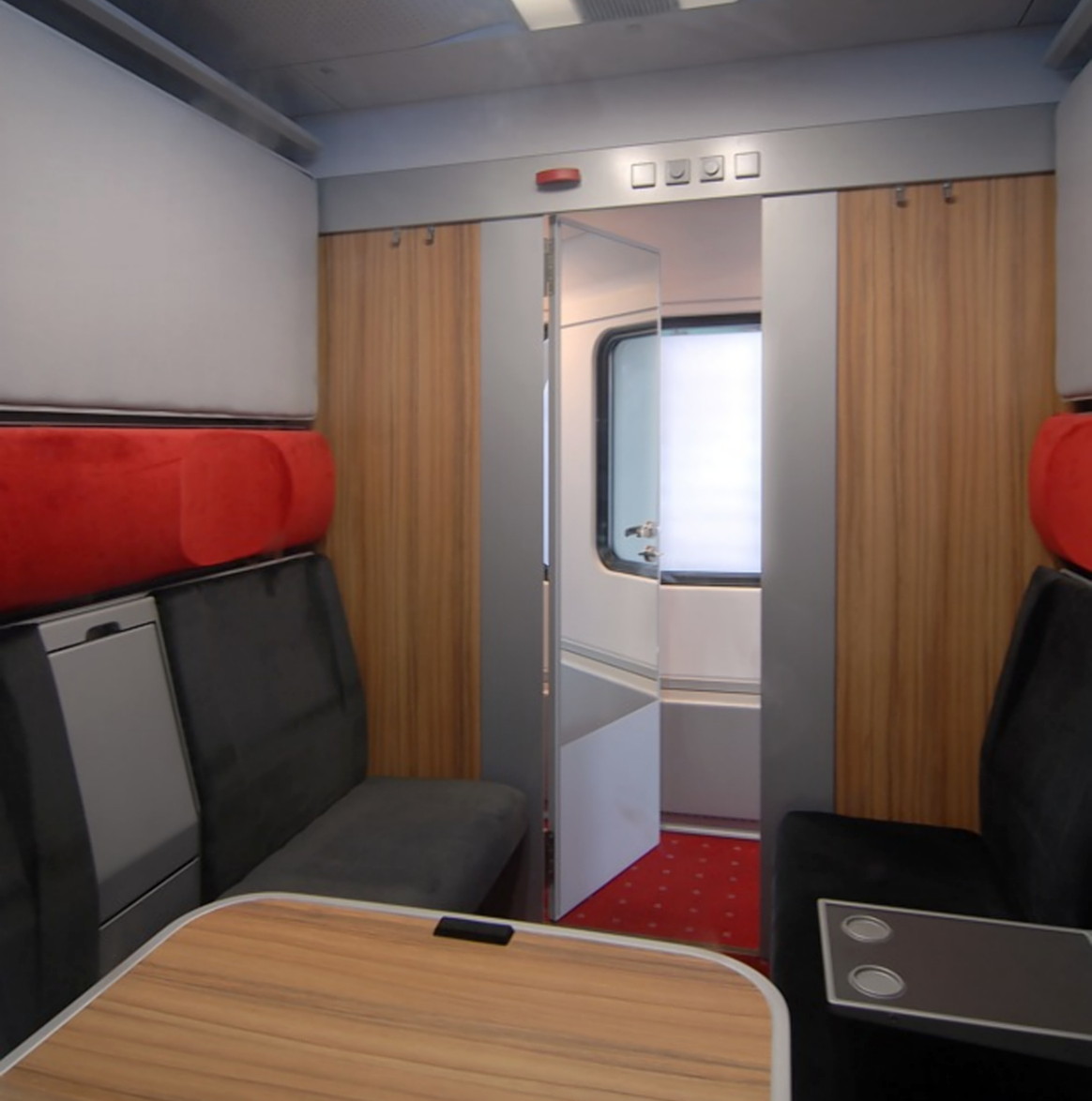
Bedrooms on night trains can double as private offices during the day.
The proposal
We propose that Amtrak operate at least four daily roundtrips linking Chicago and New York to the many cities along the corridor.
It would be the quickest way to gain useful service to the biggest cities on the corridor.
Upgraded track, improved stations, and new, state-of-the-art trainsets would be needed.
This would be an interim step as high-speed rail is built.
One train but many overlapping corridors
Passenger rail corridor planning is typically encumbered by a bias towards routes under 400 miles that serve one or two large cities. For example, states have completed feasibility studies for New York – Buffalo, Buffalo – Cleveland and Cleveland – Chicago.
Instead, the goal should be to connect as many cities together as possible. By stringing together the three routes listed above, trips like Toledo – Rochester, Sandusky – Syracuse, and Erie – Albany are also possible.

The whole corridor is greater than the sum of its parts
The full corridor affords benefits above and beyond the sum of potential shorter services (i.e. Cleveland-Chicago or Buffalo-New York).
A train that travels the entire corridor connects 171 distinct city pairs, giving passengers access to more destinations with one seat rides. Combined with better equipment utilization, that equates to fuller, more financially viable trains.

This chart represents a simplified description of ridership patterns on the existing Lake Shore Limited. The passengers making the full trip provide the base revenue, while the train serves people getting on and off as the train crosses the region.
Why four trains per day?
Four trains a day should provide a base level of service at key travel times without requiring substantial investments in new track.
We have put together a sample timetable to illustrate the concept. It assumes that Amtrak, CSX and Norfolk Southern can find ways to remove delay points to simultaneously improve freight service and increase the average passenger train speed by 5 mph – without going faster than 90 mph.
This schedule would start to build a culture of riding trains while more substantial improvements are built.
A simplified timetable is illustrated below. Click here for a detailed version showing all the stops.
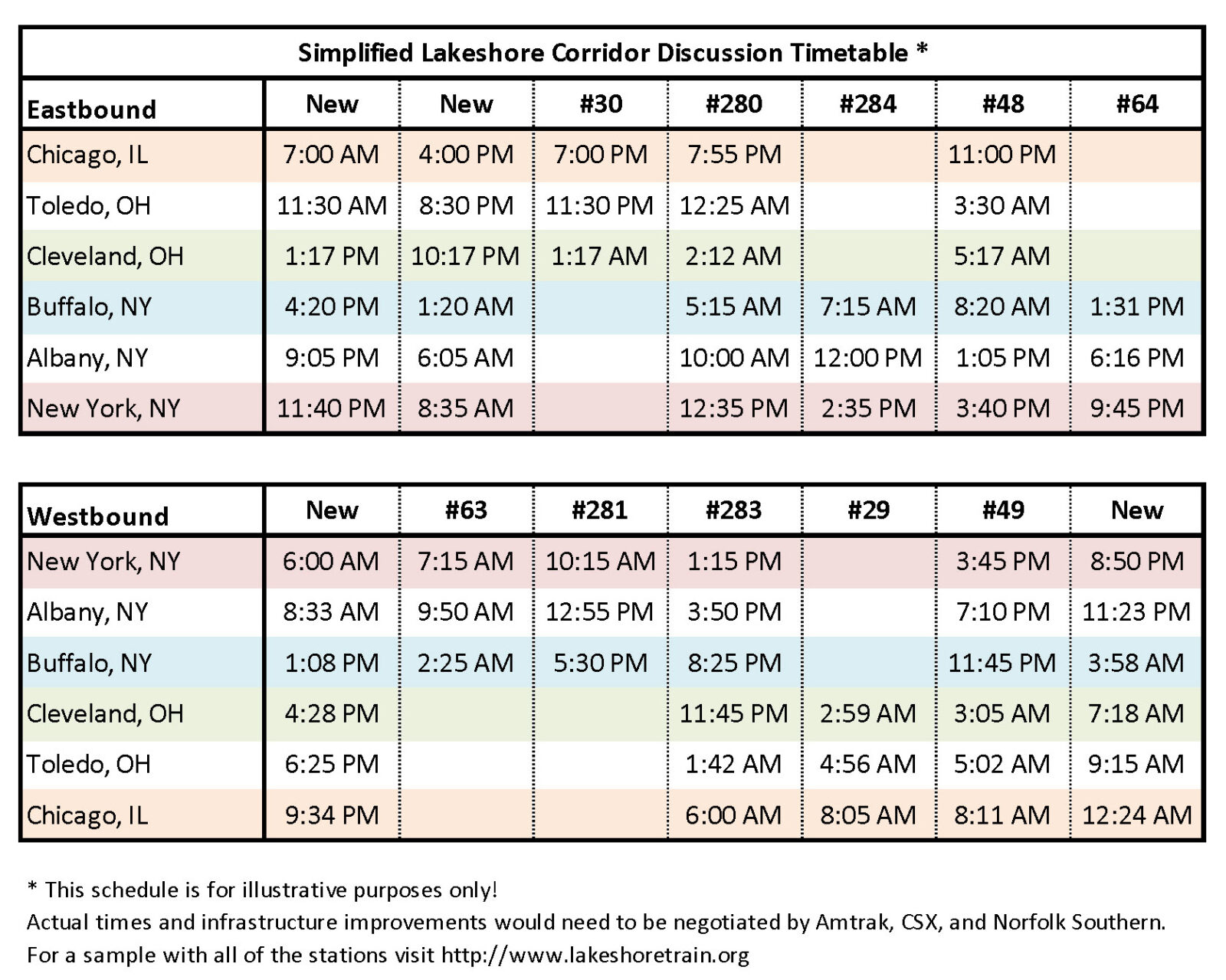
Needed investments
Making this schedule a reality will require the following upgrades:
- Track and Signals: New passing sidings will need to be constructed, congestion points removed and signals enhanced.
- Stations: New platforms serving all mainline tracks and passenger safety improvements will need to be installed.
- High-Performance Trains: Modern trains that can accelerate and take turns faster while burning less fuel will need to be purchased.
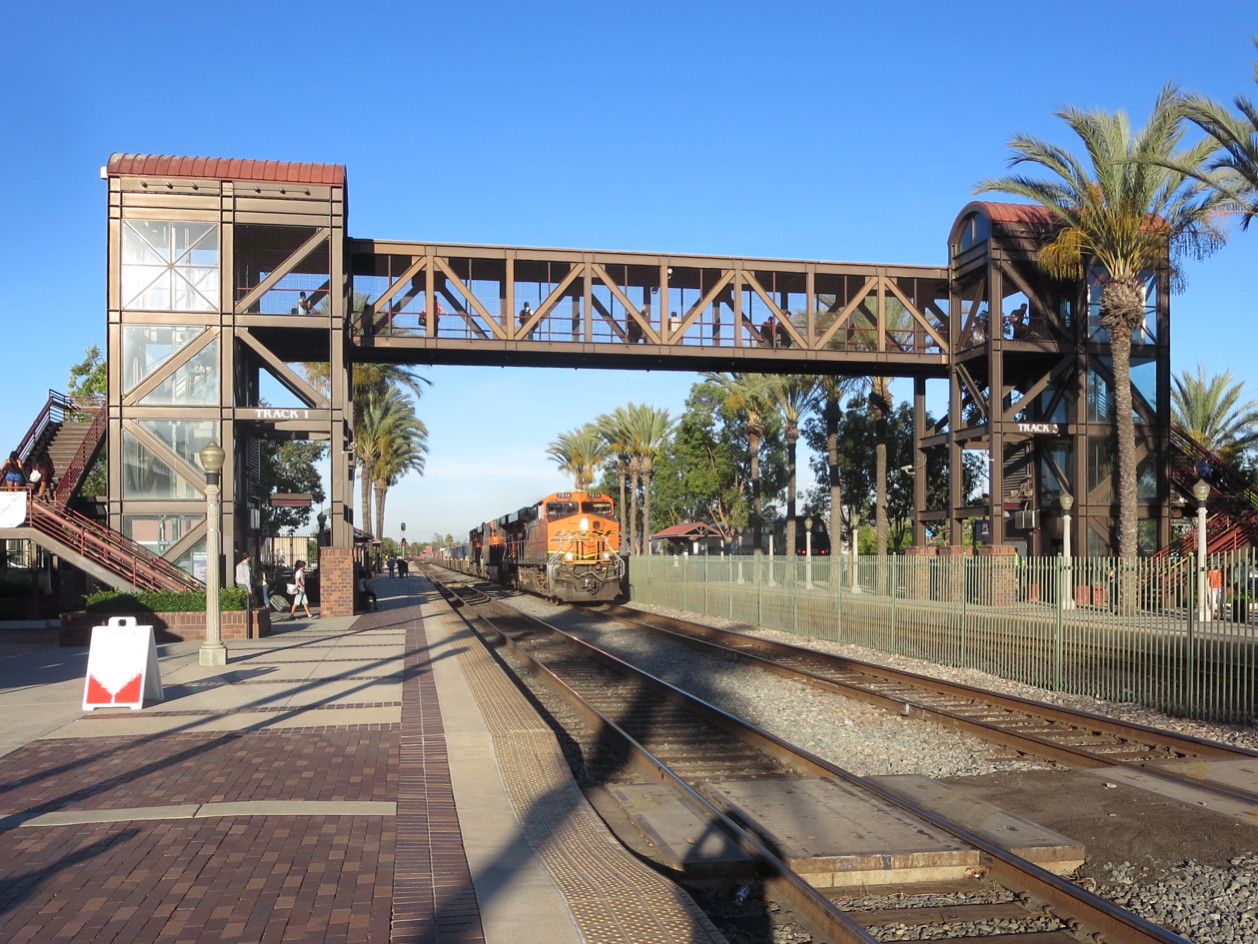
New platforms, and connections between them, will need to be added along the corridor, whether or not new trains are added.
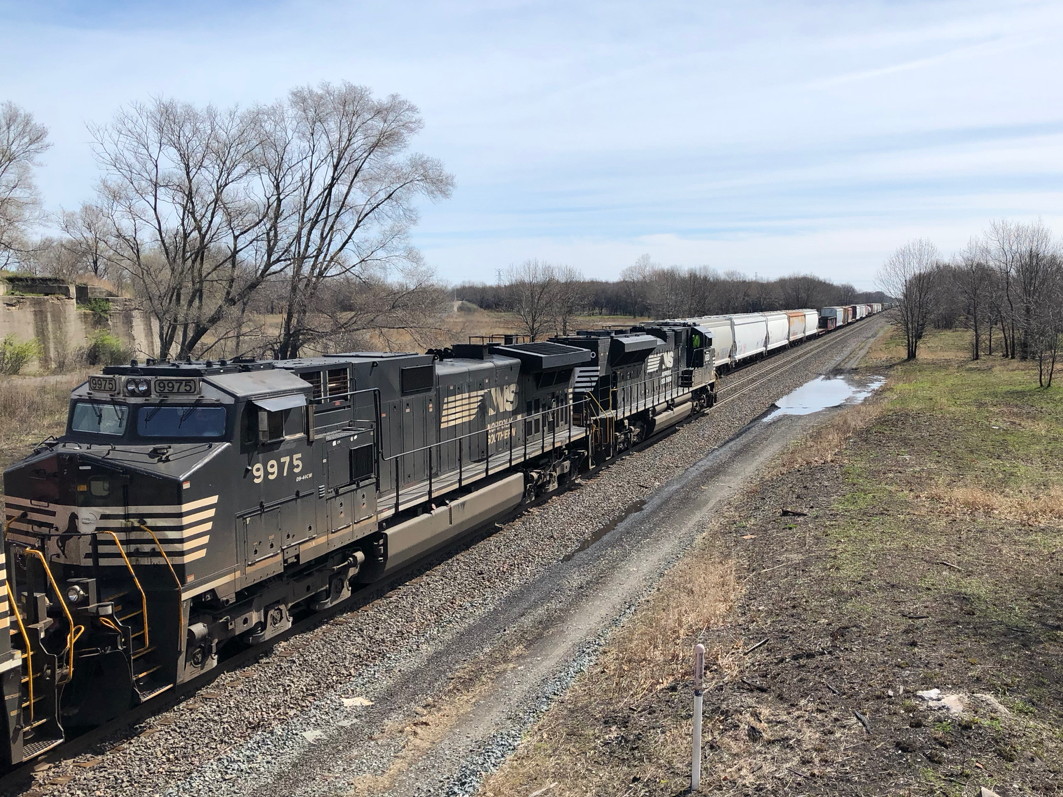
Amtrak, CSX and Norfolk Southern will need to partner together to remove delay points to improve freight and passenger service on this busy corridor.
Next steps
To begin the process, Congress will need to direct Amtrak and the Federal Railroad Administration to:
- Develop a Feasibility Study detailing ridership and operating cost estimates.
- Work with CSX and Norfolk Southern to quantify the needed track and station investments.
- Create new incentives that will encourage the railroads to invest in faster and more reliable service.
Making it happen
Improvements to the Lakeshore Corridor, and corridors around the country, will require a federal program to expand and improve passenger trains across the country. The program should be structured like the Interstate and Defense Highway program approved by Congress in 1956.
You can help make that a reality by getting involved.

Some background
The High Speed Rail Alliance (Midwest High Speed Rail Association) and the Rail Passengers Association (National Association of Railroad Passengers) did an initial feasibility study to better understand this concept.
Download Summary with Ridership Projections and Sample Schedule
